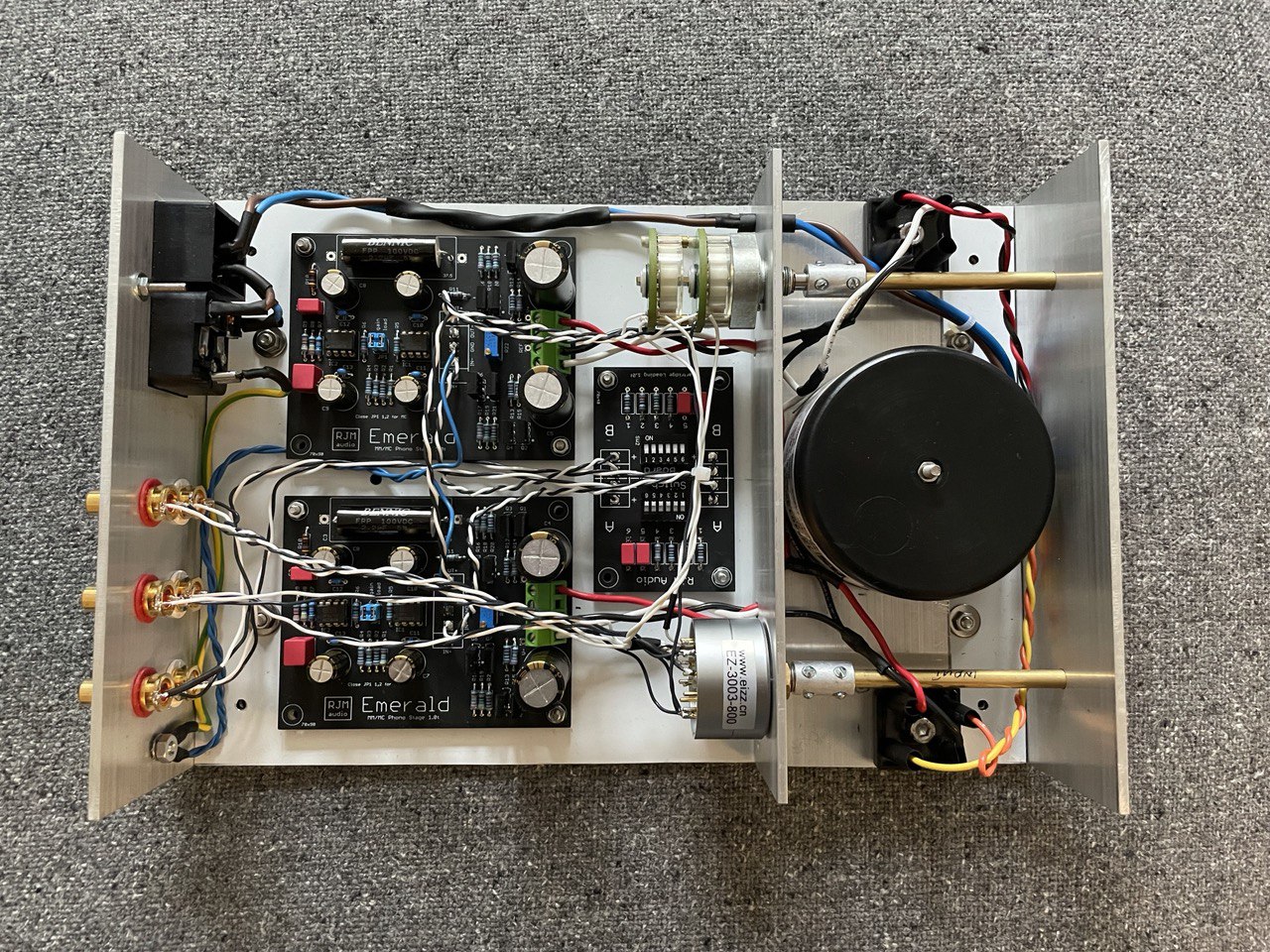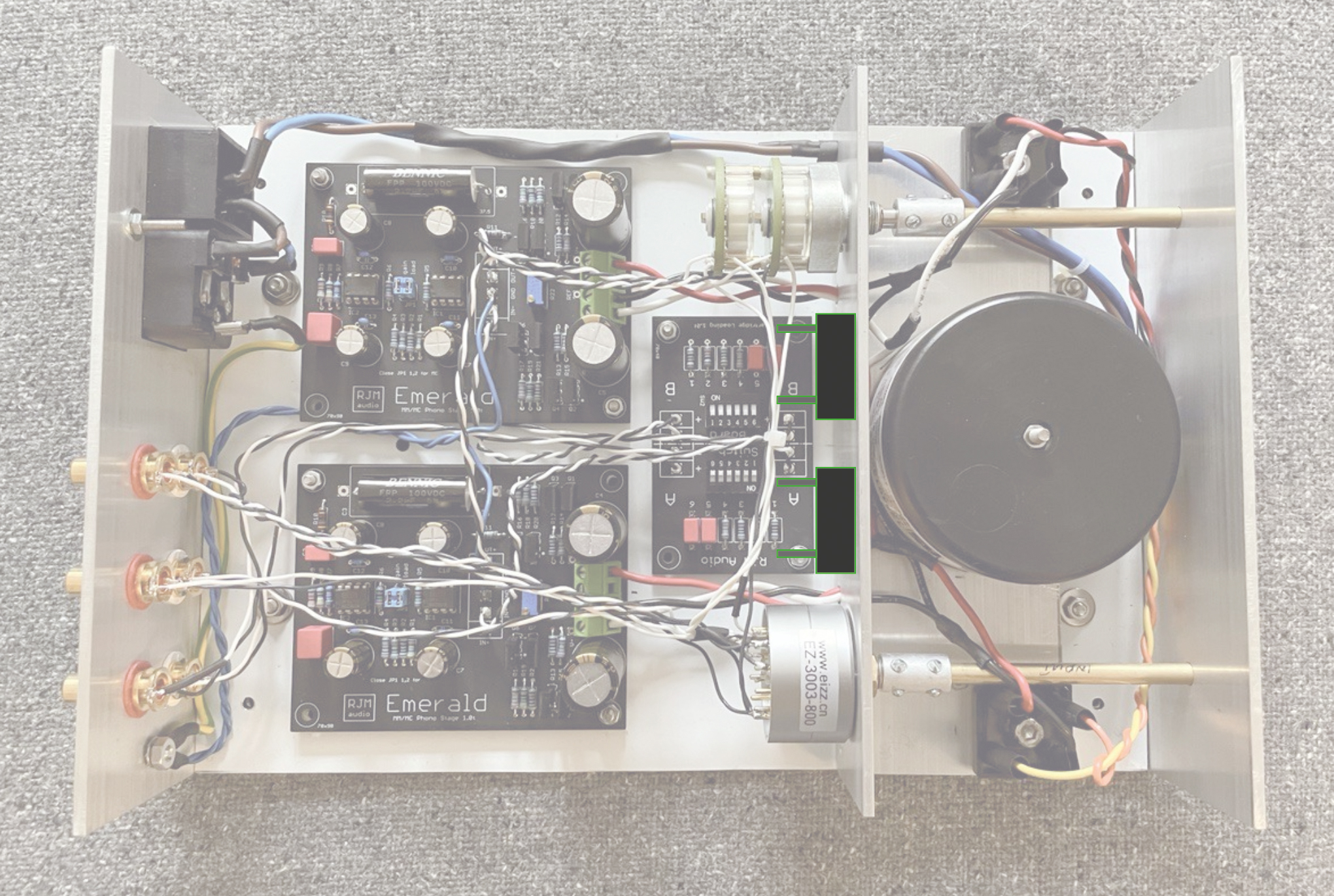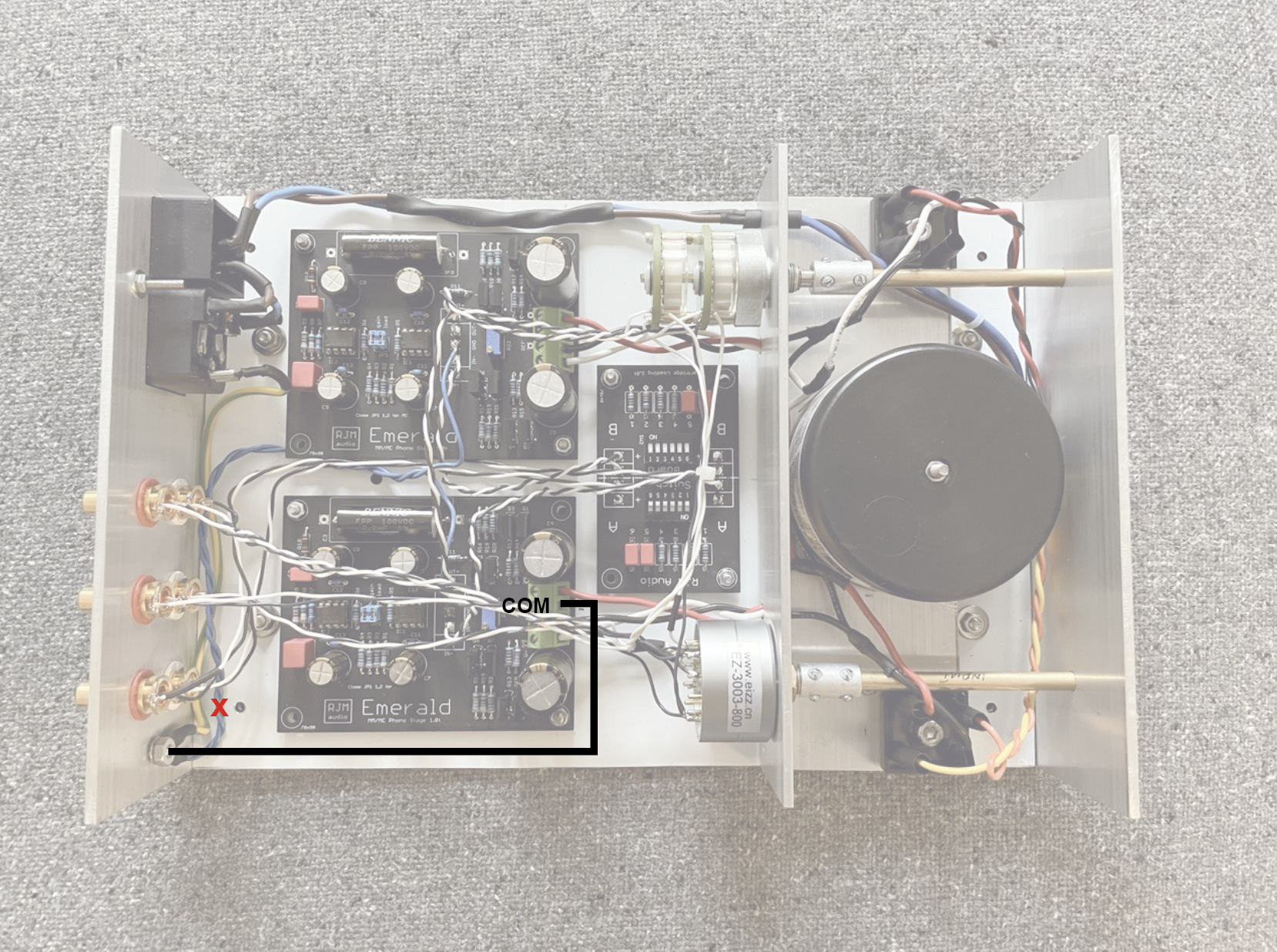In attempt to reduce box count, I decided to build the RJM Emerald phono stage, but with the addition of an input selector and stepped attenuator. This should reduce my current box count from Denon HA-500 head amp > EAR 834P > Input Selector, to just the one box, plus my DAC.
After a couple of teething issues with the PSU circuit, I got everything up and running, however there is some faint hum when the phono stage is on, and selected, which doesn't really change with the attenuator position, and is audible with it completely closed/down. Switching to the DAC input or turning the power off, there is no hum whatsoever.
The designer, Richard Murdey has a great 'helpdesk' thread over on diyaudio, however we are still struggling to remove the hum https://www.diyaudio.com/forums/ana...ald-phono-stage-help-desk-60.html#post6818558 Richard kindly analysed my recording of the hum from my speakers and it appears to be 100Hz, leading him to believe that there is likely some DC coupling. With the hum only appearing on the phono output, and regardless of attenuator position, Richard mentioned it could be the wires between the attenuator and input selector. I've just tried moving these around with the attenuator detached from the chassis - no cigar.
This is how it currently looks, I welcome any thoughts on what/how/where to try and sort this (comments on heeding the designer's advice and building a two-box setup with separate PSU will be politely ignored )
)

After a couple of teething issues with the PSU circuit, I got everything up and running, however there is some faint hum when the phono stage is on, and selected, which doesn't really change with the attenuator position, and is audible with it completely closed/down. Switching to the DAC input or turning the power off, there is no hum whatsoever.
The designer, Richard Murdey has a great 'helpdesk' thread over on diyaudio, however we are still struggling to remove the hum https://www.diyaudio.com/forums/ana...ald-phono-stage-help-desk-60.html#post6818558 Richard kindly analysed my recording of the hum from my speakers and it appears to be 100Hz, leading him to believe that there is likely some DC coupling. With the hum only appearing on the phono output, and regardless of attenuator position, Richard mentioned it could be the wires between the attenuator and input selector. I've just tried moving these around with the attenuator detached from the chassis - no cigar.
This is how it currently looks, I welcome any thoughts on what/how/where to try and sort this (comments on heeding the designer's advice and building a two-box setup with separate PSU will be politely ignored






